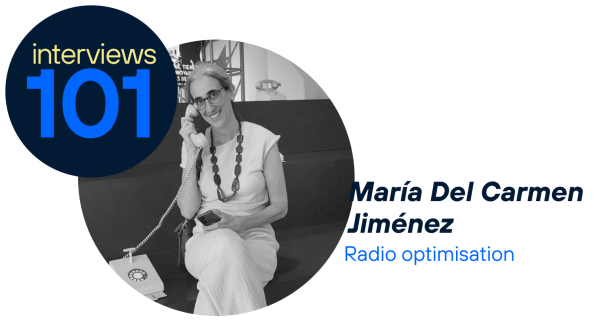More powerful, faster, and lower latency. These are the three characteristics that make the fifth generation of mobile networks essential for building a more efficient and egalitarian future. Knowing what 5G is, what it is used for and how it works will help us understand the current technological development and what we can expect.
Moreover, this latest step in the evolution of telecommunications systems has in turn enabled the growth and expansion of new technologies such as Big Data, the Internet of Things (IoT), Artificial Intelligence (AI) and Cloud Computing, among others, which can now finally take off and grow.
What is 5G? Ultra-fast connectivity
This fifth-generation mobile network is actually an improved and enhanced version of the previous generation, 4G. Businesses and individuals can benefit from its efficiency, as it has a thousand times the capacity that infrastructures were able to offer in 2010. In addition, its speed can reach 10Gbs, and it reduces latency times (the time delays in network transmission) from the 200 milliseconds offered by 4G to the millisecond of the next generation, which offers a perception of zero latency.
These featurescan connect more than 7 billion people and 7 trillion devices. Thanks to this powerful connectivity, other technologies, such as Big Data or IoT, have been able to grow, as even the average time for the creation of a connectivity service has been reduced from a 90-hour cycle to 90 minutes. In this way, companies are able to bring a wide range of services and applications to more people and businesses more securely and cost-effectively.
Let us not forget that in 2020, when the coronavirus health crisis broke out across the globe, countries were able to move forward because telecommunications enabled connectivity to ensure such crucial aspects as teleworking and telemedicine. The pandemic accelerated the digital transformation, and what would have taken just over five years to evolve took just one. And the 5G network deployment process, which had already begun, paved the way for this acceleration.
What is 5G used for? New state-of-the-art solutions
This technology can support the increasing number of connected devices, especially in large urban centres, which was of great help during the first months of lockdown during the pandemic.
But what is 5G really used for? Connected cars, Smart City, Industry 4.0, telemedicine, streaming broadcasts, eSports, etc. The latest generation of mobile networks is capable of providing solutions, for example, to cities’ new mobility and planning needs. Smart Cities are in full development and aim to sustainably and securely improve the quality of life in urban centres and offer quality services. Elements such as the connected car, smart buildings, the management of public spaces or the use of natural resources in large cities is optimised in real time, among others which are already in operation.
The field of healthcare has expanded with telemedicine and now reaches more places, such as rural areas around the globe. In addition to being able to carry out diagnoses or even operations remotely, the use of other technologies such as Big Data allows, for example, the possibility of offering a quick and accurate diagnosis in a matter of minutes.
5G has also revolutionised the field of industry thanks to the Internet of Things – IoT. The Smart Factory is now a reality. Machines are connected to each other and to people, which improves factory safety thanks to the robotisation of the most dangerous tasks, increases and adjusts productivity according to needs in real time, reduces machine incidents as it is able to introduce preventive programmes to avoid machine stoppages due to technical failures, and decentralises factories.
Work, education and leisure have also changed. Teleworking has become commonplace. We can now keep in touch with our colleagues or loved ones, as connectivity has blurred the boundaries of time and location. The 5G network also enables live broadcasts of sporting events and shows, new ways of visiting museums and travelling to other worlds and other times, with Virtual Reality and Artificial Intelligence functionalities, among many other possibilities.
How does the next-generation mobile network work?
We have just seen what 5G is and what it is used for, but we can also see how it functions. 5G networks are capable of minimising transmission power, which optimises electromagnetic field levels and ensures minimal power usage of 5G-enabled devices to complete a successful communication, reaching an energy savings of up to 90%.
While the 4G network transmits on a frequency between 800 and 1800 MHz, 5G uses frequencies of 700 MHz and 3.5 GHz, and relies on LTE (Long Term Evolution) networks, a wireless connectivity technology that also offers high speed and stability.
To support this, a new, highly-efficient and advanced radio architecture has been designed through the use of Massive MIMO antennas, which helps minimise 5G network transmissions and adapt to service requirements. This is possible, among other things, because the antennas provide coverage only where it is needed.
The first steps of 5G
The 5G network came to reinforce the capabilities of the previous generation, 4G / LTE. The fifth generation started to take its first steps in Brussels in 2018, and in the same year Telefónica started to develop some important connectivity projects in different cities. Little by little, and thanks to its powerful features, this innovative network has been improving communications and all the services that support these infrastructures, and now offers ultra-fast connectivity in more than 80% of the Spanish territory. The aim is to improve 4G functionalities and, where necessary, switch off 4G for the benefit of the fifth generation.
To tap into the full potential of this network, manufacturers of 5G equipment (or terminals) and new devices have been introducing improvements to increase their efficiency and be able to access the network. These devices ensure that they comply with exposure limits and are safe devices.
The fact that we have gone from connecting to other people to connecting to everything around us, no matter where or when, basically sums up what 5G is and what it is used for.










